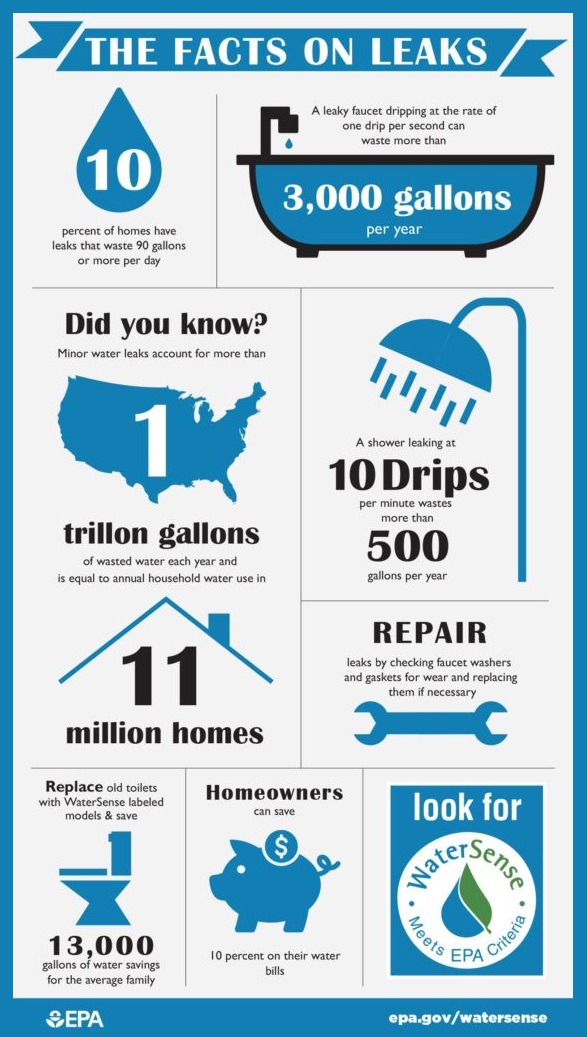
by Tom Barrett | Mar 2, 2022
EPA’s Annual Event Runs from
March 14-20, 2022
Fighting water waste is part of every irrigation professional’s job description. This year’s Fix a Leak Week is a great time to remind your customers of your commitment to water efficiency.
Irrigation System Leaks
One small irrigation system leak — the thickness of a dime — can waste about 6,300 gallons of water each month! Advise your customers of the importance of the spring checkup. To ensure irrigation system components haven’t been damaged by frost or freezing weather, they should always be inspected prior to startup.

Become WaterSense Certified
If you’re not already WaterSense certified, you may want to consider the following exclusive benefits:
- You’ll be included in the EPA’s online Directory of Certified Professionals.
- You can receive work opportunities for new home projects, federal facilities, and LEED® projects.
- You’ll be authorized to use the WaterSense label on your business cards and other promotional items.
- You’ll enjoy increased exposure to potential customers through national EPA recognition as an environmental steward.
- You’ll have access to EPA tools and other resources.
Interested? Click Here.
Are you WaterSense certified? (See sidebar at right.) If so, now’s the time to let your customers know that you’ve passed an EPA program specifically dedicated to improving water efficiency. So not only can you help identify and correct any irrigation system leaks, you can also ensure their system is performing optimally.
About 800 irrigation controllers and more than 340 spray sprinkler bodies have been certified by WaterSense for their water efficiency. It’s a good idea to carry an assortment of these products for your customers.
Other Household Leaks
Research has shown that the typical home wastes between 2,000 and 20,000 gallons of water per year due to leaks. Individually and collectively, the leaks in a single home can easily waste thousands of gallons of water every year, costing both the homeowner and the utility.
So during Fix a Leak Week, remind your customers to check for leaky faucets or showerheads, as well as malfunctioning toilets. This will demonstrate to them that you’re serious about water efficiency.
You can also provide them with some simple ways to pinpoint household leaks. Such as:
—Article Continues Below—

Pinpointing Leaks
 Check your household water usage during one of the colder months (January or February). If a family of four is using more than 12,000 gallons per month, there are some serious leaks.
Check your household water usage during one of the colder months (January or February). If a family of four is using more than 12,000 gallons per month, there are some serious leaks.
 Record the odometer-type number on your water meter. Then turn off all household water for two hours. Then check the meter again. If the number has changed at all, you’ve likely got a leak.
Record the odometer-type number on your water meter. Then turn off all household water for two hours. Then check the meter again. If the number has changed at all, you’ve likely got a leak.
 Identify toilet leaks by placing one drop of food coloring in the toilet tank. After 10 minutes, check the bowl. If there’s color in the bowl, you have a leak.
Identify toilet leaks by placing one drop of food coloring in the toilet tank. After 10 minutes, check the bowl. If there’s color in the bowl, you have a leak.
Some Simple Fixes
 Many faucet leaks can be remedied by simply replacing worn-out washers and gaskets
Many faucet leaks can be remedied by simply replacing worn-out washers and gaskets
 Got a leaky toilet? Try replacing the flapper.
Got a leaky toilet? Try replacing the flapper.
 For a leaky showerhead, make sure there’s a tight connection between the fixture and the pipe stem. Then secure it with pipe tape (also called Teflon tape).
For a leaky showerhead, make sure there’s a tight connection between the fixture and the pipe stem. Then secure it with pipe tape (also called Teflon tape).
For more leak fixes, as well as online tutorials, check out the WaterSense website.
Sources:
Featured Image: Giphy.com
The Washington Post
Water Use It Wisely
Water News Network

by Tom Barrett | Mar 3, 2021
Fix a Leak Week Runs from
March 15-21, 2021
As an irrigation professional, fighting water waste is part of your job description. The EPA’s annual Fix a Leak Week is a great time for you to remind your customers of that.
Irrigation System Leaks
An irrigation system leak as small as 1/32nd of an inch (about the thickness of a dime) can waste around 6,300 gallons of water per month! So take time this month to remind your customers about the importance of a spring checkup. Residential irrigation systems should be inspected prior to startup to make sure the components haven’t been damaged by frost or freezing weather.

Are You WaterSense Certified?
Have you taken the time to become WaterSense certified? If not, why not?
Certification entitles you to exclusive benefits. Such as:
- Inclusion in the EPA’s online Directory of Certified Professionals.
- Work opportunities for federal facilities, new home projects, and LEED® projects.
- Use of the WaterSense label on business cards and other marketing items.
- Increased exposure to potential customers through national EPA recognition as an environmental steward.
- Access to helpful EPA tools and other resources.
Interested? Click Here.
If you’re WaterSense certified (see sidebar at right), let your customers know that you’ve passed an EPA-recommended program specifically focused on water efficiency. Not only can you help identify and correct any irrigation system leaks, but you can also make sure their system is operating at peak performance.
More than 340 spray sprinkler bodies and almost 800 irrigation controllers have been certified by WaterSense as the most water-efficient products. You’ll want to carry a wide assortment of these products for your customers.
Other Household Leaks
Did you know that repairing a single leaky toilet can save up to 500 gallons of water a day? That’s the amount needed to fill the average backyard swimming pool.
By reminding your customers to check for leaky faucets and showerheads, and malfunctioning toilets, you’ll demonstrate that you’re serious about water efficiency.
Your customers can expect to save about 10 percent on their water bills simply by fixing minor household leaks. Here’s how:
—Article Continues Below—

Pinpointing Leaks
Inform your customers of these simple ways to detect water leaks:
 Take a look at your water usage during January or February. If it’s more than 12,000 gallons per month (for a family of four), you have some serious leaks.
Take a look at your water usage during January or February. If it’s more than 12,000 gallons per month (for a family of four), you have some serious leaks.
 Check your water meter before and after a two-hour period of no water usage. If the meter changes at all, you’ve probably got a leak.
Check your water meter before and after a two-hour period of no water usage. If the meter changes at all, you’ve probably got a leak.
 To identify leaks in a toilet, place one drop of food coloring in the toilet tank. Wait 10 minutes, then check the bowl. If the color shows up, you have a leak.
To identify leaks in a toilet, place one drop of food coloring in the toilet tank. Wait 10 minutes, then check the bowl. If the color shows up, you have a leak.
Some Simple Fixes
 Leaky toilets can often be fixed simply by replacing the flapper.
Leaky toilets can often be fixed simply by replacing the flapper.
 For most faucet leaks, simply replace old or worn faucet washers and gaskets.
For most faucet leaks, simply replace old or worn faucet washers and gaskets.
 Got a leaky showerhead? Use plumber’s tape to secure the connection between the fixture and the pipe stem.
Got a leaky showerhead? Use plumber’s tape to secure the connection between the fixture and the pipe stem.
For more leak fixes, check out the WaterSense website.
Sources:
Featured Image: Adobe, License Granted
EPA
The Washington Post
Water Use It Wisely
Water News Network

by Tom Barrett | Mar 4, 2020
EPA’s Annual Fix a Leak Week Runs from
March 16-22, 2020
As an irrigation professional, what are you doing to combat water waste? If you’re not sure, then Fix a Leak Week is a great time to start!
According to the EPA, household leaks can waste more than 1 trillion gallons of water annually! That amounts to nearly 10,000 gallons of wasted water for the average household – enough water to wash 270 loads of laundry.
And just repairing a leaky toilet can save up to 500 gallons of water a day, the amount needed to fill the average backyard swimming pool.
Plugging Those Leaks!
Fix a Leak Week is the perfect time to check for leaky kitchen and bathroom faucets, malfunctioning toilets and errant irrigation systems. Let your customers know that, by fixing some of these easily corrected household leaks, they can save about 10 percent on their water bills!

Are You WaterSense Certified?
Have you taken the time to become WaterSense certified? If not, why not?
Certification entitles you to exclusive EPA benefits. Such as:
- Inclusion in the WaterSense online Directory of Certified Professionals.
- Work opportunities for new home projects, federal facilities, and LEED® projects.
- Use of the WaterSense promotional label on business cards and marketing items.
- Increased exposure to customers through national recognition from EPA as an environmental steward.
- Access to helpful tools and materials created by EPA.
Interested? Click Here.
Here are a couple of ways to identify water leaks:
 Take a look at the water usage during a colder month, such as January or February. If a family of four uses more than 12,000 gallons per month, there are some serious leaks.
Take a look at the water usage during a colder month, such as January or February. If a family of four uses more than 12,000 gallons per month, there are some serious leaks.
 Check the water meter before and after a two-hour period when no water is being used. If the meter changes at all, there’s probably a leak.
Check the water meter before and after a two-hour period when no water is being used. If the meter changes at all, there’s probably a leak.
Some Easy Fixes
There’s also a simple way to identify leaks in a toilet. Place a drop of food coloring in the toilet tank. If the color shows up in the bowl after 10 minutes, you have a leak. (This problem can often be fixed by simply replacing the flapper.)
Most faucet leaks can be fixed by replacing old and worn faucet washers and gaskets. For leaky shower heads, use pipe tape to secure the connection between the showerhead and the pipe stem.
For the EPA’s complete list of leak fixes, click here.
Calling All Irrigation Professionals!
Did you know, an irrigation system leak as small as 1/32nd of an inch in diameter (about the thickness of a dime) can waste about 6,300 gallons of water per month!?
Remind your customers that a residential irrigation system should be checked each spring before use to make sure it wasn’t damaged by frost or freezing.
If you’re WaterSense certified (see sidebar, above right), let them know that you’ve passed a government-approved certification program specifically focused on water efficiency. Not only can you help detect and correct leaks for them, but you can also make sure their systems operate as efficiently as possible.
Sources:
Featured Image: Adobe, License Granted
EPA
The Washington Post
Water Use It Wisely
Water News Network

by Tom Barrett | Mar 6, 2019
Fix a Leak Week Combats Water Waste
Every year the EPA sponsors “Fix a Leak Week” as a national effort to combat water waste.
That’s because, every year, household leaks can waste more than 1 trillion gallons of water nationwide! How much water is that? It’s…
- Enough to fill 40 million swimming pools and 24 billion bathtubs
- Almost equal to the capacity of Florida’s vast Lake Okeechobee
- Equal to the annual household water usage of more than 11 million homes
Plug Those Leaks!
 This year’s Fix a Leak Week runs from March 19 through March 25. It’s the perfect time to check for leaky kitchen and bathroom faucets, malfunctioning toilets and errant irrigation systems. Fixing some of these easily corrected household leaks can save homeowners about 10 percent on their water bills, according to the EPA.
This year’s Fix a Leak Week runs from March 19 through March 25. It’s the perfect time to check for leaky kitchen and bathroom faucets, malfunctioning toilets and errant irrigation systems. Fixing some of these easily corrected household leaks can save homeowners about 10 percent on their water bills, according to the EPA.
Karen Wirth is in charge of marketing and outreach for the EPA’s WaterSense program. In her view, most folks are clueless about the total amount of water wasted because they “see a couple of drips coming out of their shower head, or sprinkler outside, or faucet, it doesn’t seem like that much.”
Did You Know…
… Homeowners can save about 10 percent on their water bills just by plugging leaks?
So each year, the EPA hones in on the drips during Fix a Leak Week. Special events are planned from coast to coast to teach homeowners how to find and fix household leaks.
Easy Fixes
There’s a simple way to check for leaks in the toilet, Wirth said. “Just put a few drops of food coloring in the tank. If that shows up in the bowl, you have a leak.” This problem can often be fixed by simply replacing the flapper.
Replacing old and worn faucet washers and gaskets fixes most faucet leaks. For leaky shower heads, use pipe tape to secure the connection between the showerhead and the pipe stem.
For the EPA’s complete list of leak fixes, click here.
Call an Irrigation Professional
A residential irrigation system should be checked each spring before use to make sure it wasn’t damaged by frost or freezing. Even a leak as small as 1/32nd of an inch in diameter (about the thickness of a dime) can waste about 6,300 gallons of water per month!
Hire an irrigation professional certified by a WaterSense labeled program to inspect it for you. These professionals have passed a certification program focused on water efficiency. They’ll not only help detect and correct leaks in the system, but also maximize its efficiency.
Sources:
EPA
The Washington Post
Alliance for Water Efficiency

by Tom Barrett | Mar 8, 2018
Fix-a-Leak Week
Celebrates 10 Years
Did you know….
Each year, household leaks can waste more than 1 trillion gallons of water nationwide? That amount is:
- Enough to fill 40 million swimming pools and 24 billion bathtubs
- Almost equal to the capacity of Florida’s vast Lake Okeechobee
- Equal to the annual household water use of more than 11 million homes
Plug That Leak!
The EPA’s “Fix a Leak Week” is a national effort to stop that waste. This year commemorates the 10th anniversary of the event, which runs from March 19 through March 25.

Leaky kitchen and bathroom faucets, malfunctioning toilets and errant sprinkler systems cause much of the water waste. Fixing some of these easily corrected household leaks can save homeowners about 10 percent on their water bills, according to the EPA.
Karen Wirth is in charge of marketing and outreach for the EPA’s WaterSense program. In her view, most folks are clueless about the total amount of water wasted because they “see a couple of drips coming out of their shower head, or sprinkler outside, or faucet, it doesn’t seem like that much.”
So each year, the EPA hones in on the drips during Fix a Leak Week. Special events are planned from coast to coast to teach homeowners how to find and fix household leaks. To download the EPA’s Fix a Leak fact sheet click, click here.
Easy Fixes
There’s a simple way to check for leaks in the toilet, Wirth said. “Just put a few drops of food coloring in the tank. If that shows up in the bowl, you have a leak.” This problem can often be fixed by simply replacing the flapper.
Replacing old and worn faucet washers and gaskets fixes most faucet leaks.
For leaky shower heads, use pipe tape to secure the connection between the showerhead and the pipe stem.
For the EPA’s complete list of leak fixes, click here.
Call a Professional
Irrigation systems can be another problem area. But this one is best left to the professionals.
“An irrigation system that has a leak 1/32nd of an inch in diameter (about the thickness of a dime) can waste about 6,300 gallons of water per month,” according to the EPA.
They suggest that homeowners consult an irrigation professional certified by WaterSense to check for leaks throughout the system.
Sources:
EPA
The Washington Post
Alliance for Water Efficiency
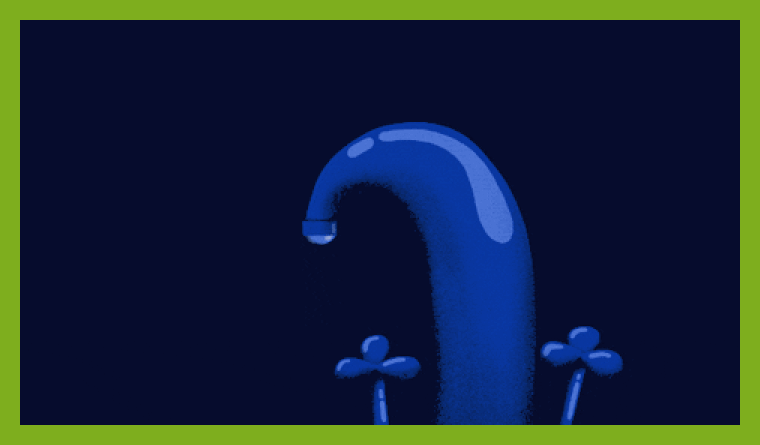

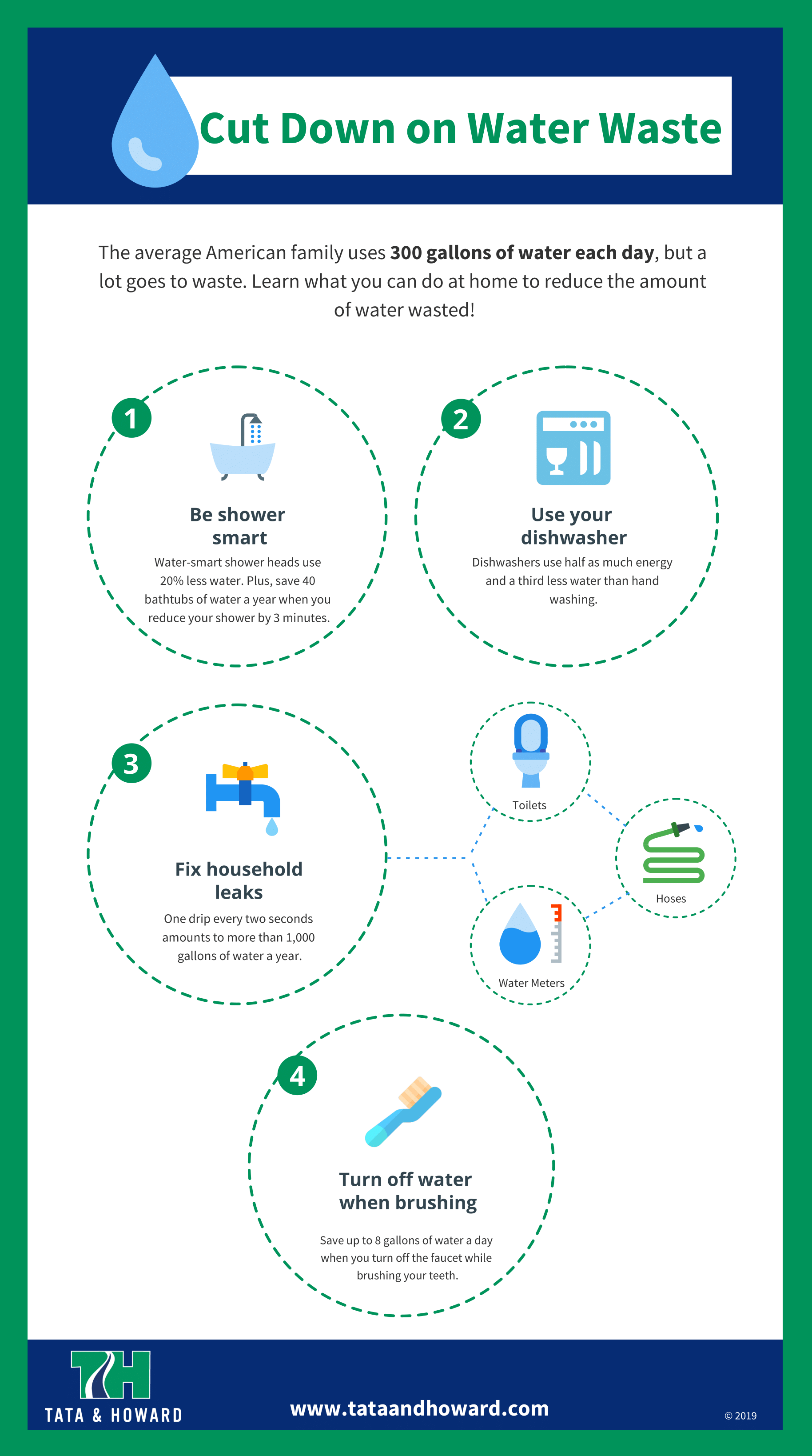
![]() Check your household water usage during one of the colder months (January or February). If a family of four is using more than 12,000 gallons per month, there are some serious leaks.
Check your household water usage during one of the colder months (January or February). If a family of four is using more than 12,000 gallons per month, there are some serious leaks.![]() Record the odometer-type number on your water meter. Then turn off all household water for two hours. Then check the meter again. If the number has changed at all, you’ve likely got a leak.
Record the odometer-type number on your water meter. Then turn off all household water for two hours. Then check the meter again. If the number has changed at all, you’ve likely got a leak.![]() Identify toilet leaks by placing one drop of food coloring in the toilet tank. After 10 minutes, check the bowl. If there’s color in the bowl, you have a leak.
Identify toilet leaks by placing one drop of food coloring in the toilet tank. After 10 minutes, check the bowl. If there’s color in the bowl, you have a leak.![]() Many faucet leaks can be remedied by simply replacing worn-out washers and gaskets
Many faucet leaks can be remedied by simply replacing worn-out washers and gaskets![]() Got a leaky toilet? Try replacing the flapper.
Got a leaky toilet? Try replacing the flapper. ![]() For a leaky showerhead, make sure there’s a tight connection between the fixture and the pipe stem. Then secure it with pipe tape (also called Teflon tape).
For a leaky showerhead, make sure there’s a tight connection between the fixture and the pipe stem. Then secure it with pipe tape (also called Teflon tape).
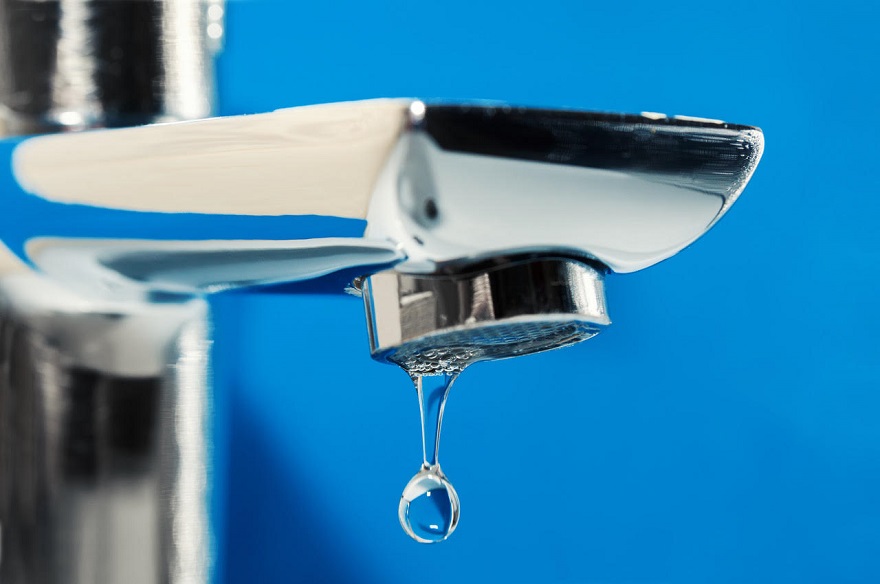
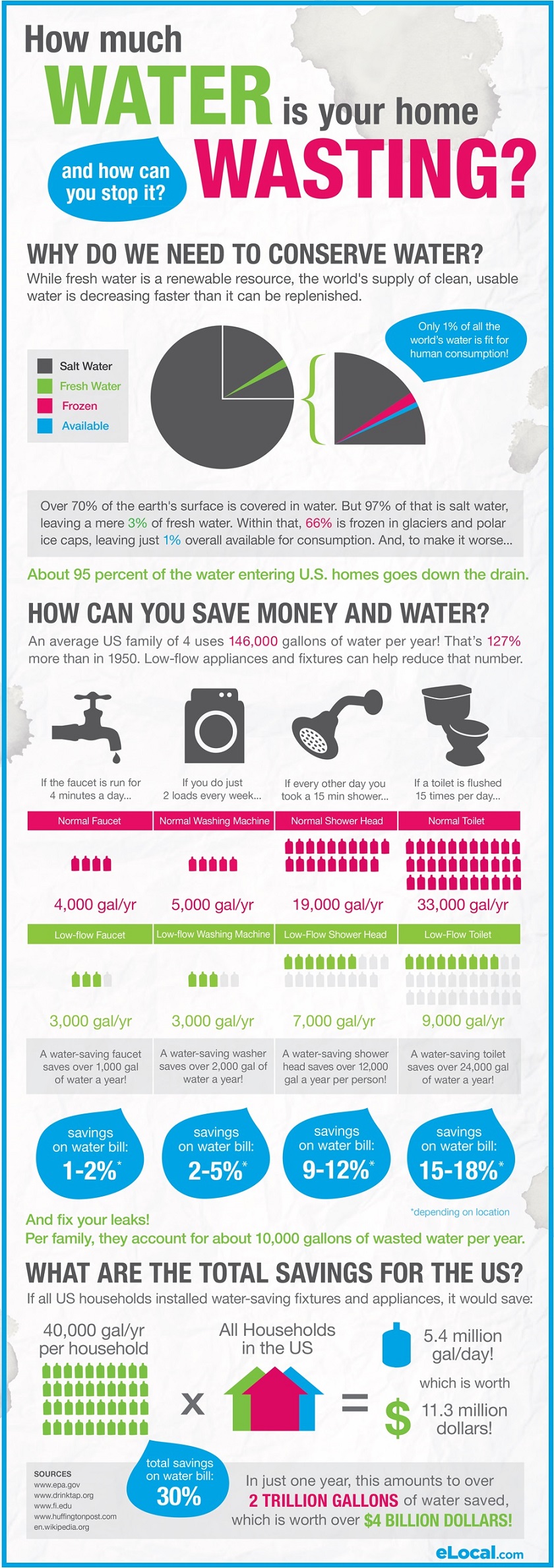
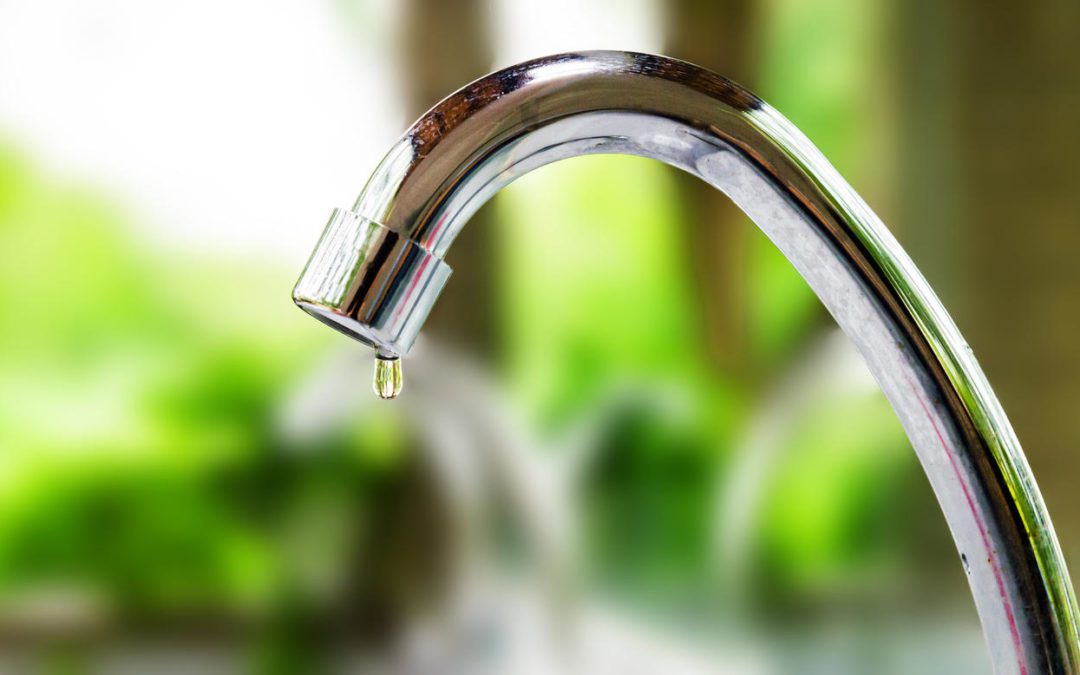

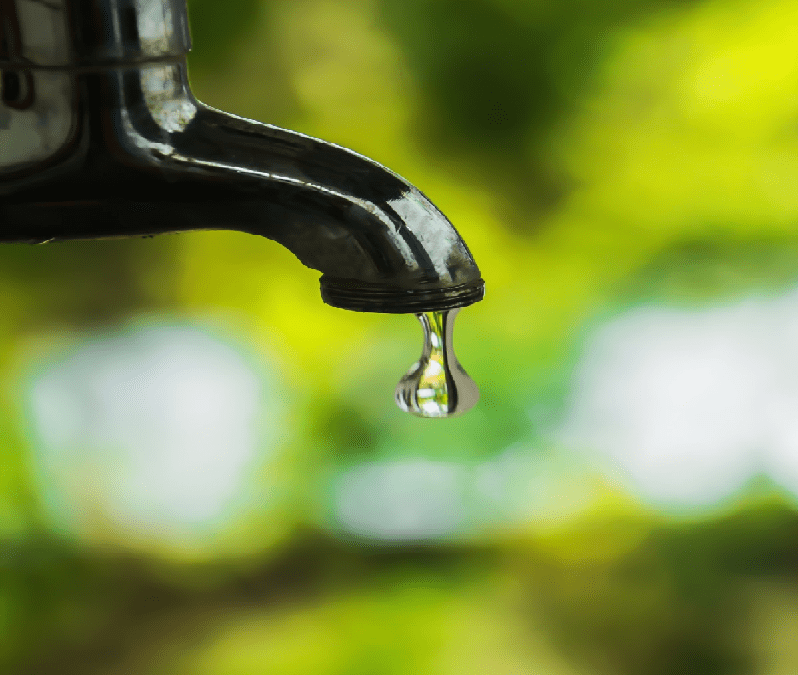
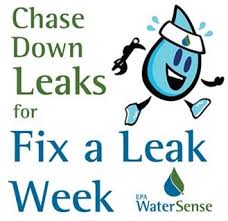 This year’s Fix a Leak Week runs from March 19 through March 25. It’s the perfect time to check for l
This year’s Fix a Leak Week runs from March 19 through March 25. It’s the perfect time to check for l
